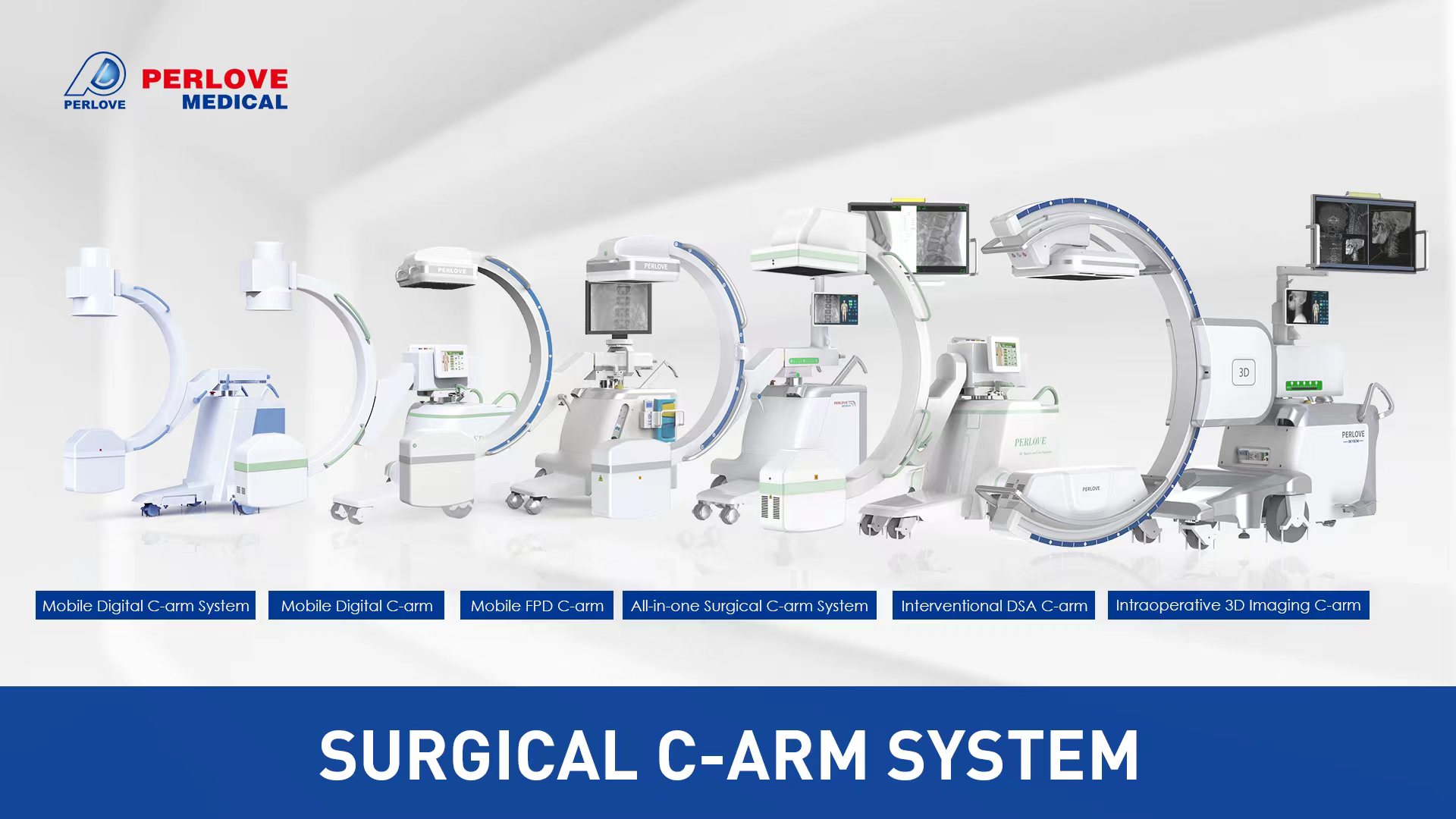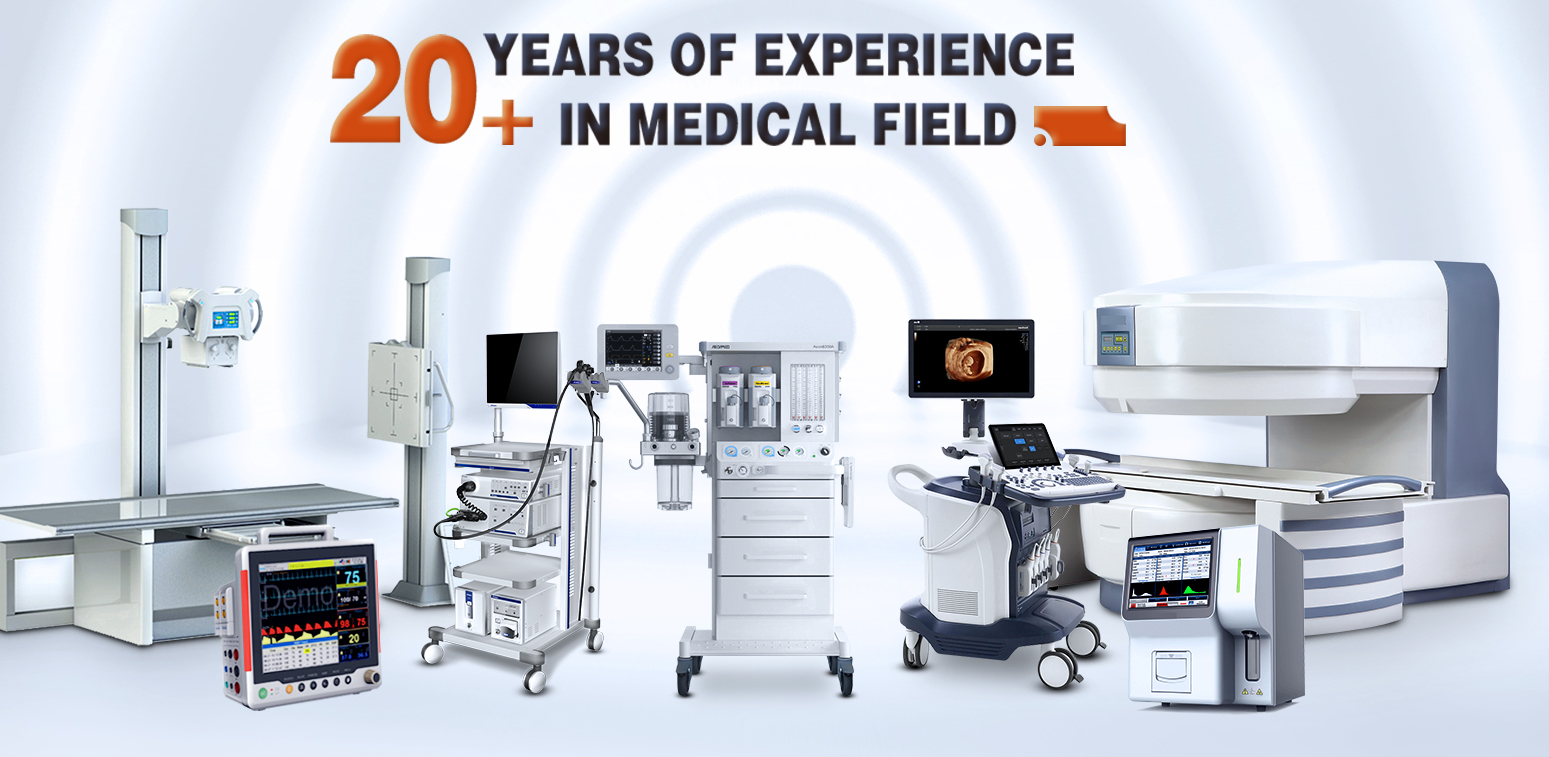C-shaped arm, X-ray generator, Image intensifier or flat-panel detector, Monitor, Control panel, Mobile base, and other components.
#1 All You Need To Know About C Arm X-Ray Machine.
C-arm X-ray machine is a type of medical imaging equipment that is used during surgeries and other medical procedures to provide real-time images of the patient’s anatomy. The machine consists of a C-shaped arm that houses an X-ray generator on one end and an image detector on the other end. The arm can be rotated and positioned around the patient’s body to obtain images from different angles.
C-arm X-ray machines are commonly used in a variety of medical procedures, such as orthopedic surgeries, vascular procedures, and neurosurgery. The real-time images provided by the machine help surgeons to precisely guide surgical instruments and devices and to ensure accurate placement.
C-arm X-ray machines come in different sizes and configurations depending on the specific application. They are typically used in hospitals, clinics, and other medical facilities and are operated by trained radiologic technologists or physicians.

C-arm X-ray machine is primarily used for intraoperative imaging during surgical procedures. It allows real-time imaging of the patient’s anatomy in the operating room, enabling the surgeon to visualize and navigate the surgical field with greater precision.
Some of the common procedures that use C-arm X-ray machines include:
1. Orthopedic surgeries: C-arm X-ray machines are used to guide the placement of screws, plates, and other devices during orthopedic procedures such as fracture repair, joint replacement, and spinal surgery.
2. Vascular surgeries: C-arm X-ray machines are used to guide the placement of catheters and other devices during vascular procedures such as angioplasty, stent placement, and embolization.
3. Neurosurgery: C-arm X-ray machines are used to guide the placement of devices during neurosurgical procedures such as brain and spinal cord surgeries.
4. Pain management: C-arm X-ray machines are used for image-guided pain management procedures such as nerve blocks, facet joint injections, and epidural injections.
Overall, C-arm X-ray machines play an important role in improving the accuracy and safety of various surgical procedures, and they have become an essential tool in many surgical settings.

C-shaped arm
This is the central component of the machine that houses the X-ray source and the image detector. The arm can be rotated and positioned around the patient’s body to obtain images from different angles.
X-ray generator
This is the part of the machine that produces X-rays. The X-ray generator is located on one end of the C-shaped arm and emits X-rays that pass through the patient’s body and are detected on the other end of the arm.
Image intensifier or flat-panel detector
This is the part of the machine that detects the X-rays after they pass through the patient’s body. The image intensifier or flat-panel detector converts the X-rays into a visible image that is displayed on a monitor in real-time.
Monitor
The monitor displays the real-time images captured by the machine. It allows the surgeon or physician to view the patient’s anatomy and guide their instruments and devices in real-time.
Control panel
The control panel is used to operate the machine. It allows the user to adjust the X-ray settings, such as the dose and the image resolution, and to move the C-arm around the patient’s body.
Mobile base
The machine is typically mounted on a mobile base that allows it to be easily moved and positioned around the patient’s bed. This provides flexibility and allows the machine to be used in different locations in the hospital or clinic.
C-arm X-ray machine is primarily used for intraoperative imaging during surgical procedures. It allows real-time imaging of the patient’s anatomy in the operating room, enabling the surgeon to visualize and navigate the surgical field with greater precision.
Some of the common procedures that use C-arm X-ray machines include:
1. Orthopedic surgeries: C-arm X-ray machines are used to guide the placement of screws, plates, and other devices during orthopedic procedures such as fracture repair, joint replacement, and spinal surgery.
2. Vascular surgeries: C-arm X-ray machines are used to guide the placement of catheters and other devices during vascular procedures such as angioplasty, stent placement, and embolization.
3. Neurosurgery: C-arm X-ray machines are used to guide the placement of devices during neurosurgical procedures such as brain and spinal cord surgeries.
4. Pain management: C-arm X-ray machines are used for image-guided pain management procedures such as nerve blocks, facet joint injections, and epidural injections.
Overall, C-arm X-ray machines play an important role in improving the accuracy and safety of various surgical procedures, and they have become an essential tool in many surgical settings.
C-arm X-ray machine is primarily used for intraoperative imaging during surgical procedures. It allows real-time imaging of the patient’s anatomy in the operating room, enabling the surgeon to visualize and navigate the surgical field with greater precision.
Orthopedic surgeries
C-arm X-ray machines are used to guide the placement of screws, plates, and other devices during orthopedic procedures such as fracture repair, joint replacement, and spinal surgery.
Vascular surgeries
C-arm X-ray machines are used to guide the placement of catheters and other devices during vascular procedures such as angioplasty, stent placement, and embolization.
Neurosurgery
C-arm X-ray machines are used to guide the placement of devices during neurosurgical procedures such as brain and spinal cord surgeries.
Pain management
C-arm X-ray machines are used for image-guided pain management procedures such as nerve blocks, facet joint injections, and epidural injections.
Overall, C-arm X-ray machines play an important role in improving the accuracy and safety of various surgical procedures, and they have become an essential tool in many surgical settings.
#6 What Are The Top 5 Frequently Asked Questions (Faqs) When Buying A C-Arm?
#1 What is the image quality of the C-arm?
The image quality is a critical factor when selecting a C-arm. You should inquire about the image resolution, contrast, and dose. A high-quality image is important for accurate and reliable diagnoses.
#2 What is the size and weight of the C-arm?
The size and weight of the C-arm are important considerations if you plan to move the machine frequently. You should inquire about the size and weight of the machine and whether it is mobile or stationary.
#3 What is the warranty period and service contract?
You should inquire about the warranty period and service contract offered by the manufacturer. A comprehensive warranty and service contract can provide you with peace of mind and ensure that you receive prompt and efficient service.
#4 What are the costs associated with owning a C-arm?
You should inquire about the total cost of ownership, including the purchase price, maintenance costs, and ongoing operational expenses. You should also consider the potential return on investment and the benefits of owning a C-arm.
#5 What training and support are provided by the manufacturer?
You should inquire about the training and support provided by the manufacturer. A comprehensive training program can help you and your staff operate the machine safely and effectively. Ongoing technical support can ensure that any issues are resolved quickly and efficiently.
#1
C-arm machines, radiography machines, and fixed fluoroscopy machines are all types of medical imaging equipment that use X-rays to produce images of the body. However, they differ in terms of their design, functionality, and usage.
#2
C-arm machines are portable, versatile imaging systems that are commonly used in surgical procedures. They consist of an X-ray source mounted on a C-shaped arm that is attached to a mobile unit. C-arm machines produce real-time, high-quality images that can be displayed on a monitor and used to guide surgical procedures.
#3
Radiography machines, also known as X-ray machines, produce static images of the body using a fixed X-ray source and a detector. The patient is positioned between the X-ray source and the detector, and the X-rays pass through the body to produce an image that is captured on film or digitally. Radiography machines are commonly used to diagnose bone fractures, lung infections, and other conditions.
#4
Fixed fluoroscopy machines are similar to C-arm machines but are fixed in place and typically used in diagnostic procedures such as gastrointestinal and cardiac procedures. They produce real-time images of the body using continuous X-ray exposure, and the images are displayed on a monitor. Fixed fluoroscopy machines are not portable and are typically used in a specific imaging room within a hospital or clinic.
In summary, C-arm machines are mobile, versatile imaging systems that are used in surgical procedures, while radiography machines produce static images and are used for diagnostic purposes. Fixed fluoroscopy machines are similar to C-arm machines but are fixed in place and used in diagnostic procedures.
#8 What Is The Ideal X-Ray Generator Power?
The ideal X-ray generator power depends on the specific imaging needs of the healthcare facility or medical practice. The X-ray generator power is measured in kilovolts (kV) and refers to the strength of the X-ray beam produced by the generator.
For diagnostic purposes, the X-ray generator power typically ranges between 50 to 150 kV, depending on the type of imaging needed. For example, imaging of soft tissues may require a lower kV setting, while imaging of bone may require a higher kV setting.
In surgical settings, C-arm machines typically have a higher X-ray generator power, ranging from 60 to 120 kV. The higher power is necessary to produce high-quality, real-time images that can guide surgical procedures.
Ultimately, the ideal X-ray generator power will depend on the specific needs and applications of the healthcare facility or medical practice. It is important to work with a reputable X-ray equipment supplier or manufacturer to determine the appropriate generator power for your specific imaging needs.
The dimensions and maneuverability of C-arm machines can vary depending on the specific model and manufacturer. Generally, C-arm machines are designed to be compact and mobile to allow for easy maneuverability and positioning during surgical procedures.
The size of the C-arm machine can vary depending on the size of the imaging detector and the length of the C-arm. The C-arm length can range from 60 to 120 inches, and the height of the machine can range from 60 to 80 inches. The width of the machine can range from 30 to 40 inches, and the weight of the machine can range from 500 to 1,500 pounds.
C-arm machines typically have wheels or casters that allow for easy movement and positioning within the operating room or surgical suite. Some models may also have features such as telescoping arms or rotating monitors that allow for greater flexibility and maneuverability during procedures.
It is important to consider the dimensions and maneuverability of the C-arm machine when selecting a model for your healthcare facility or medical practice. A machine that is too large or cumbersome may be difficult to position during procedures, while a machine that is too small may not provide adequate imaging coverage. It is important to work with a reputable C-arm supplier or manufacturer to select a machine that meets your specific needs and requirements.
The decision to choose a compact or full-size C-arm depends on the specific needs and applications of the healthcare facility or medical practice. Both types of C-arm machines have their advantages and disadvantages, and the selection depends on the specific imaging needs, the size of the operating room, and the budget.
Compact C-arm machines are smaller in size and more mobile than full-size C-arms, making them ideal for facilities with limited space or those that require frequent movement of the machine between different operating rooms or locations. They typically have smaller image intensifiers and generators, which may result in lower image quality compared to full-size C-arms. Compact C-arms are also less expensive than full-size C-arms.
Full-size C-arm machines are larger in size and typically have higher power generators and larger image intensifiers, which result in better image quality. They are ideal for facilities that require high-quality imaging for complex procedures and have larger operating rooms. Full-size C-arms are also more expensive than compact C-arms and may require a dedicated operating room due to their size.
Ultimately, the decision to choose a compact or full-size C-arm depends on the specific needs and applications of the healthcare facility or medical practice. It is important to work with a reputable C-arm supplier or manufacturer to determine the best option for your specific needs and budget.

